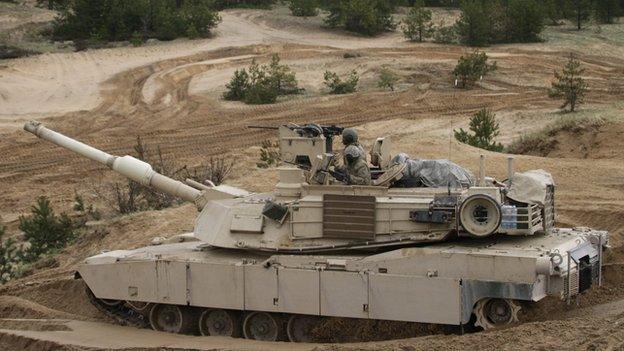US Nato general fears rapid Russian troop deployments
- Published
WATCH: The commander of US troops in Europe says Nato cannot rapidly deploy large forces in the way that Russia can
The commander of US troops in Europe says Nato cannot rapidly deploy large forces to Eastern Europe in the way that Russia can.
Lt-Gen Ben Hodges was speaking to the BBC's Hardtalk programme during large Nato exercises in north-western Poland.
"The Russians are able to move huge formations and lots of equipment a long distance very fast," he said.
Nato needs to have that speed too, he said. "Three days' notification, we ought to be able to do that," he said.
More than 31,000 troops from 24 nations took part in Nato's Anaconda-16 exercises in Poland, from 7 to 17 June.
The day after they ended, German Foreign Minister Frank-Walter Steinmeier warned Nato against "sabre-rattling and warmongering", calling for exercises to be replaced with more dialogue and co-operation with Russia. "Whoever believes that symbolic tank parades in Eastern Europe bring more security, is mistaken," he told Bild newspaper.
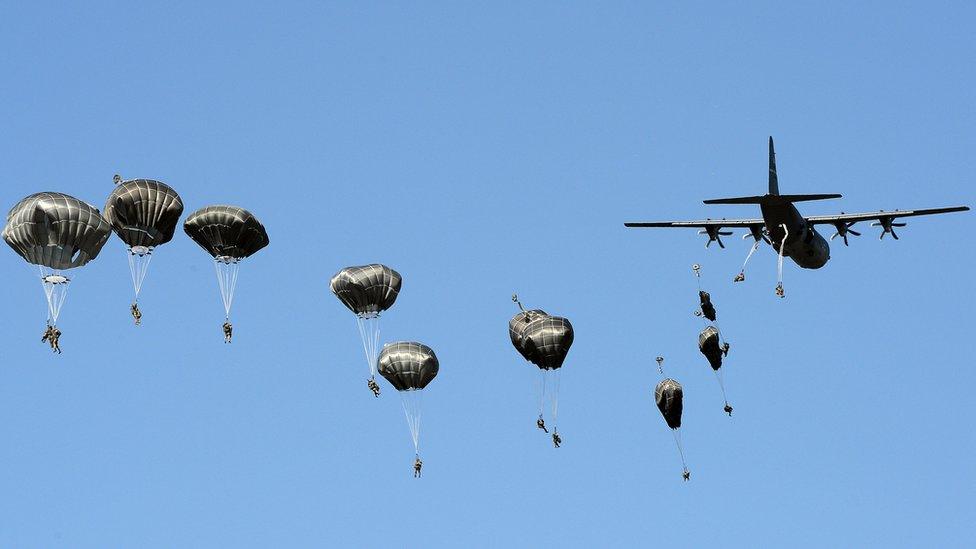
Nato's exercises in Poland in recent days included airborne forces
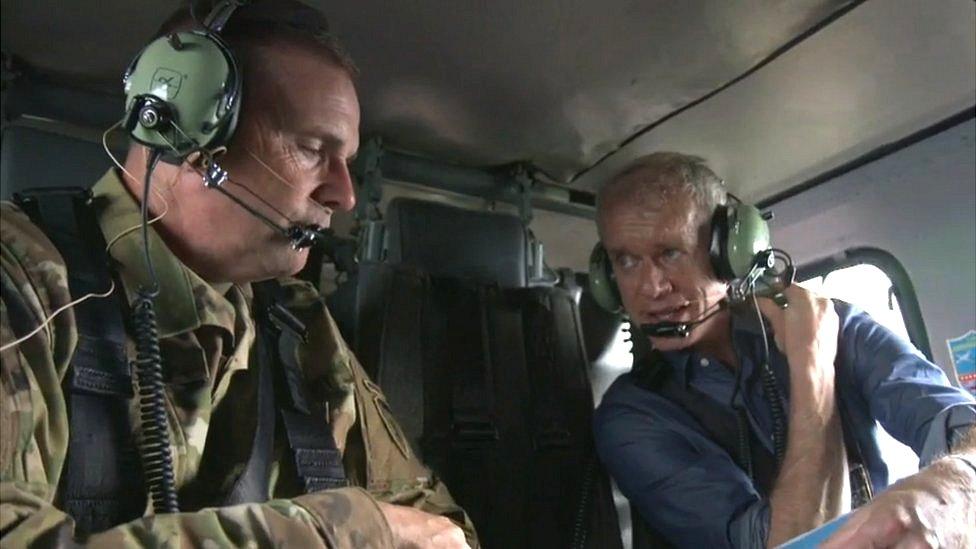
Gen Hodges (left) spoke to the BBC's Stephen Sackur during the Nato exercises
Former Soviet bloc countries, now Nato members, were alarmed by Russia's rapid annexation of Crimea during the Ukraine crisis in March 2014. That operation caused the biggest chill in relations with Russia since the end of the Cold War in 1991.
Russia's occupation of Georgian territory after a brief war in August 2008 also signalled a Russian readiness to intervene militarily in what it calls its "neighbourhood".
Russian snap exercises
Nato's strategy towards Russia will be high on the agenda of a Nato summit in Warsaw next month.
Russia has held large military exercises near Ukraine's borders since the Crimea annexation and the uprising by pro-Russian separatists in eastern Ukraine.
Nato has also complained of aggressive behaviour by Russian warplanes in the Baltic region. Russia, meanwhile, objects to Nato operating close to its borders, seeing the alliance as an aggressor.
"The thing I worry about the most is freedom of movement. Their snap exercises that they do, I personally am surprised each time they do it. And so you can see why that scares me," Gen Hodges said.
Since 2007 Russia has been training its forces to conduct "any sort of operation" on its borders, he said. A future crisis would probably involve "hybrid" warfare, including "a nasty cyber environment", he added.
Nato and Western leaders say there is clear evidence of Russia supplying heavy weapons and regular troops to the rebels who control a large swathe of Ukraine's Donetsk and Luhansk regions. Moscow denies that, but says some Russian "volunteers" are helping the rebels.
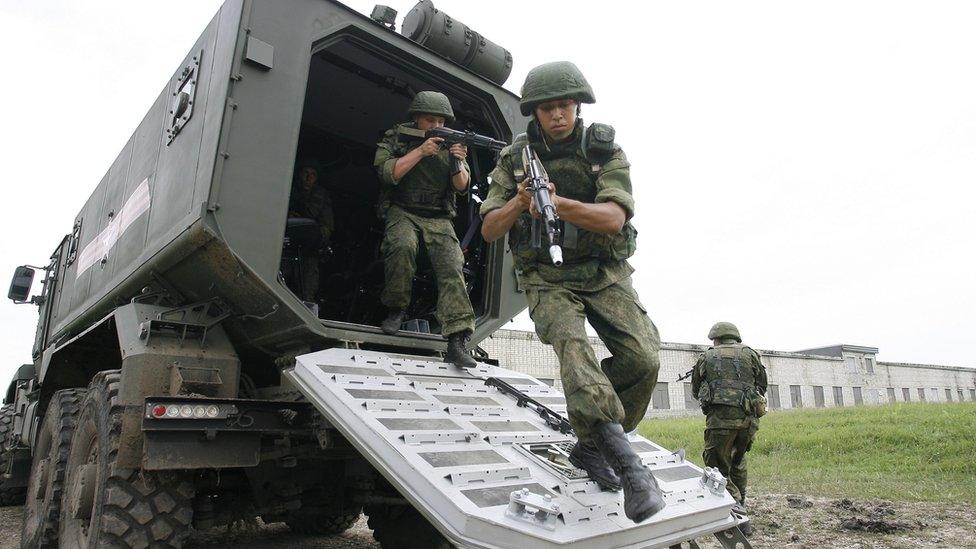
Russian special forces training: Rapid deployment is a feature of the frequent drills

Nato reinforcements
Gen Hodges said Nato should create a "military Schengen zone", to give the 28-nation alliance freedom of movement. Schengen is the EU's passport-free zone which encompasses most EU member states.
The general said it was "concerning" that Russia was able to deploy 20,000 troops and a lot of equipment "on the border of a Nato country, or maybe somewhere like Georgia or Ukraine".
"The Russians have what we call freedom of movement on the interior lines. They can move anywhere inside of Russia, as fast as they want."
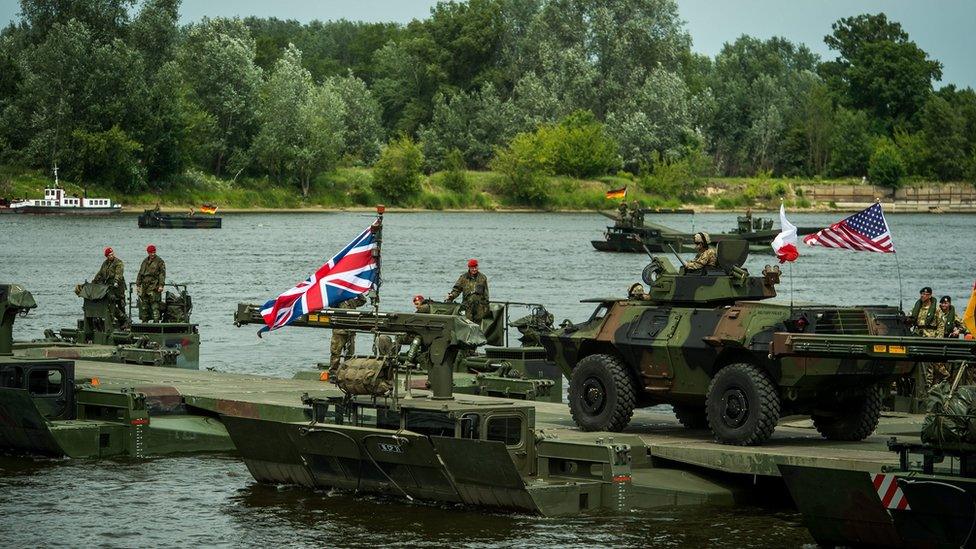
Nato practised pontoon operations on the Vistula river during Anaconda-16
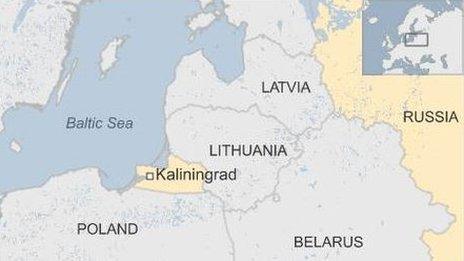
Nato is beefing up its presence closer to Russia's borders. It plans to deploy a battalion to Poland and three more to the neighbouring Baltic states - Estonia, Latvia and Lithuania - reaching a total of about 4,000 troops.
The deployment will be rotational, yet Poland wants permanent Nato bases to be set up in the region.
Gen Hodges said Nato was short of combat aircraft and short-range air defence in Eastern Europe. But he said Nato's deterrence was being bolstered by the US spending $3.4bn (£2.3bn) "bringing equipment back into Europe".
"I see it [Russia] as the only potential threat, that could destroy the United States, or the UK or Germany, or any other country. Because of their nuclear force. And they talk about nuclear weapons a lot," he said.
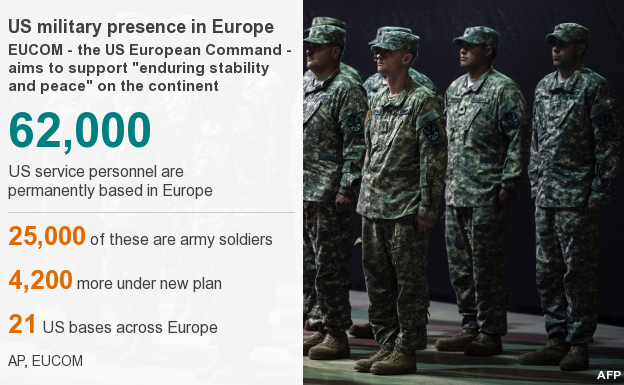
- Published18 June 2016
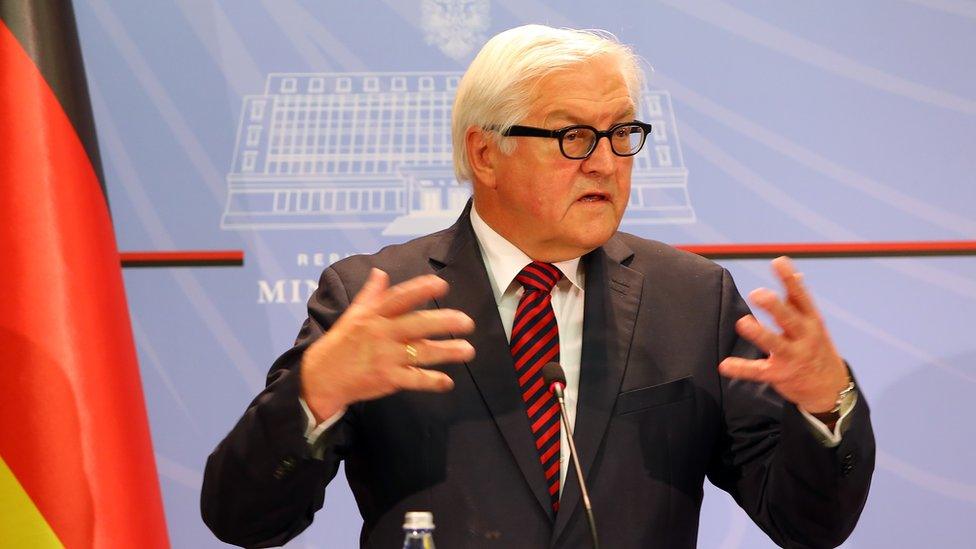
- Published3 June 2016
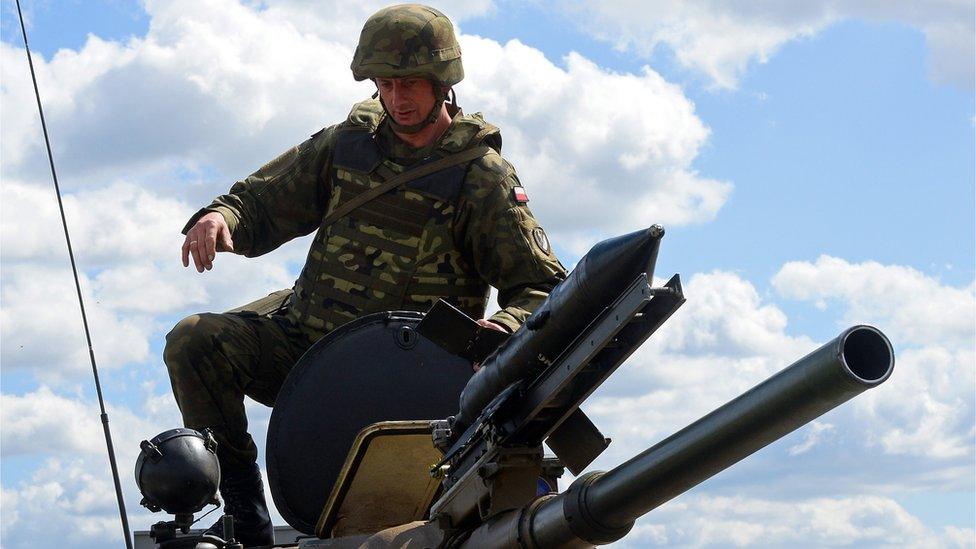
- Published3 May 2016
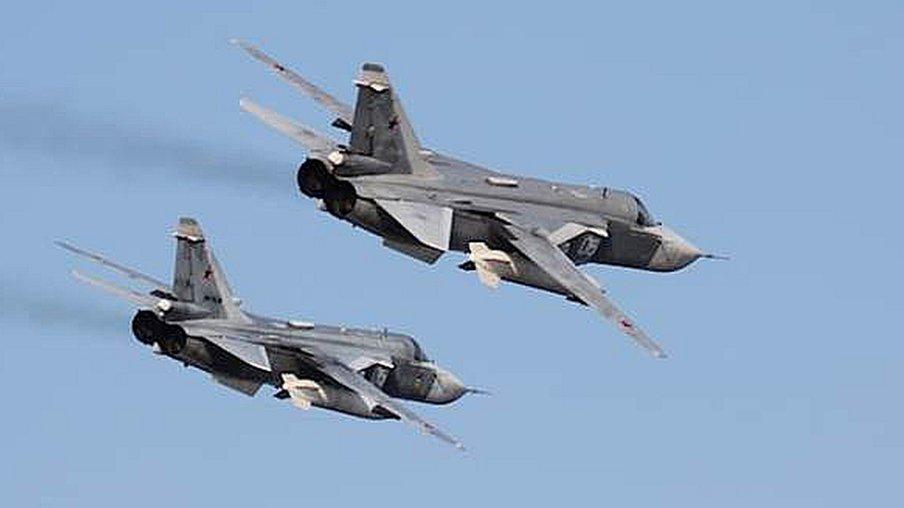
- Published30 March 2016
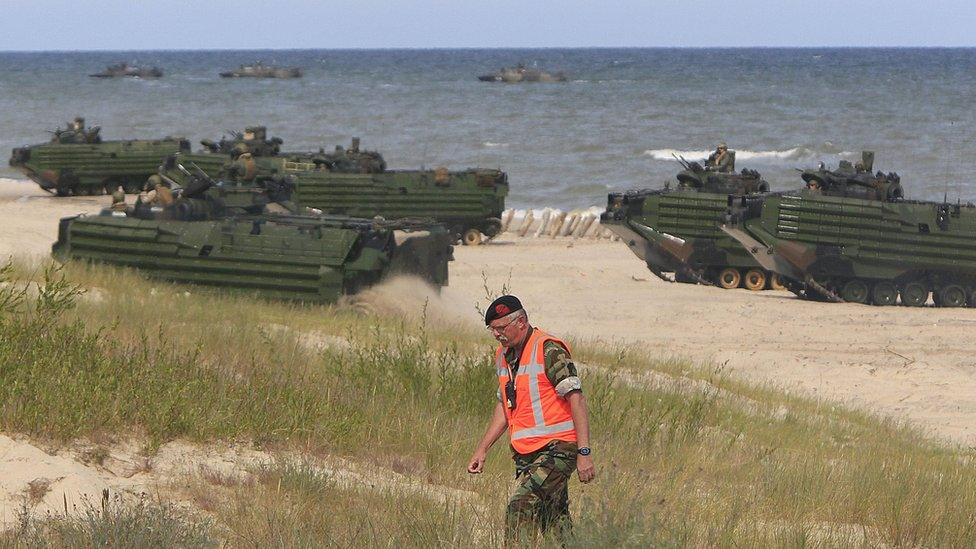
- Published15 June 2015
